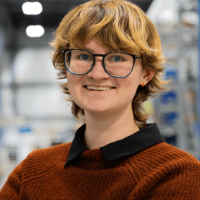Although you might be preoccupied with cost factors like material or packaging, ordering smarter is almost guaranteed to increase the value of your machine runs. One way to place smarter orders and save money is to combine batch orders into a single Stock Order.
At Strouse, we offer a Stock Order Program that helps our customers experience a smooth and effective ordering and production process.
In this article, we will explain how stock orders can lower your production price and increase the efficiency of placing part orders.
Stock Orders Explained
A Stock Order is a quantity of parts purchased in advance for planned deliveries. These deliveries often come in quarterly releases (or the period that fits the customer’s needs).
Stock orders are an excellent way to plan your product orders for consistency, but they don’t extend indefinitely for the following reasons:
- Supplier prices change, and so will the price of materials
- Project timelines adjust, and so does production
- The adhesive shelf life of the material could expire
Because of these factors, stock orders tend to extend for 3-4 months. Because they are essentially terms between the customer and the converter, they’re often subject to prior approval.
Use Stock Orders to Enhance Production
Stock orders can significantly increase your production efficiency. Here are some of the best ways you can benefit:
1. GET THE MOST OUT OF PRODUCTION COSTS
From a surface-level perspective, it seems simple: ordering fewer parts should cost less, right? However, the production cost isn’t always that simple in material converting.
MEET MINIMUM MATERIAL ORDER QUANTITIES
For instance, suppose you needed 100 yards of material to make your product. The supplier might only sell quantities of 1,000 yards, meaning you’d need to purchase far more material than expected. Regardless of the quantity ordered, your converter would end up having to buy 1,000 yards of material either way.
BENEFIT FROM FIXED LABOR TIME & SETUP COSTS
Setting up the machine press to build 500 parts is the same as setting up the press for 50,000 parts. Therefore, you can get more value from ordering higher quantities because you’ll receive far more from a single setup.
2. RECEIVE EXACT AMOUNTS ON TIME
Exact product quantity amounts can vary due to industry standards.
THE ±10% PART RULE
It’s common for converting orders to follow a ±10% part rule, meaning that ordering 100 parts could result in an outcome of anywhere from 90 to 110, depending on the converter and that particular production run. This rule exists because custom parts can be unpredictable, and the first press run could be far more challenging or easier than expected.
A more complex product could lead to higher errors and result in only 90 acceptable parts. However, if the part ran smoothly on the press, the converter might send the customer even slightly more than the original order asked.
So, what does this have to do with planning releases?
Stock orders allow your converter to manufacture larger part quantities and deliver them in released batches. If an issue does arise on press, which would normally necessitate using the ±10% rule, stock orders allow you to have enough material to mitigate some of these events.
3. DON’T OVERSTOCK YOUR LIMITED STORAGE
It isn’t always easy to decide upon your order quantity, and you want to guarantee you’re receiving the best number of parts in the most efficient way possible. Yet various factors, such as product adhesive shelf life and available storage space, could significantly impact what and how much you order. Placing a stock order may allow you to time releases to match your product shelf life and storage space needs.
Using Stock Orders to Improve Production
Ultimately, joining Strouse’s Stock Order Program will allow you to make the most of your production costs and receive the products you need as you need them without overstocking.
If you’re interested in joining our program or optimizing another project, contact us, and we can help you get started.
Do you want to learn more about production, design, and project planning? See our Learning Center for more information on design solutions, industry tips, and more.





.png?width=300&name=Untitled%20(75).png)

